Cold hands can be a pain! The ‘hot aches’ when your cold numb hands begin to warm up can be excruciating, like your fingers are on fire. This sensation, caused by your blood vessels opening and pumping blood to the end of your fingers, is actually a good thing. It’s your body’s circulation getting going again. But before that, your fingers and hands will no doubt have gone numb, leaving you unable to grip a paddle, undo a zip, or worst of all open up your emergency chocolate bar!
The blood vessels are close to the surface on your hand and wrist, so it’s no wonder they can chill down quickly. Even cool water, with the added effect of wind chill, will rapidly increase the speed your body cools and draws energy to your core, leaving exposed parts like your fingers and feet to get cold and numb. But of course, a bit of cold water doesn’t need to stop play. Covering your hands will:
Reduce wind chill
… anything windproof with an air gap or insulation between your hand and the wind
Reduce the flushing of cold water
… gloves that make a seal around your wrist can help
Insulate your skin
… enough thickness of material that does not conduct heat
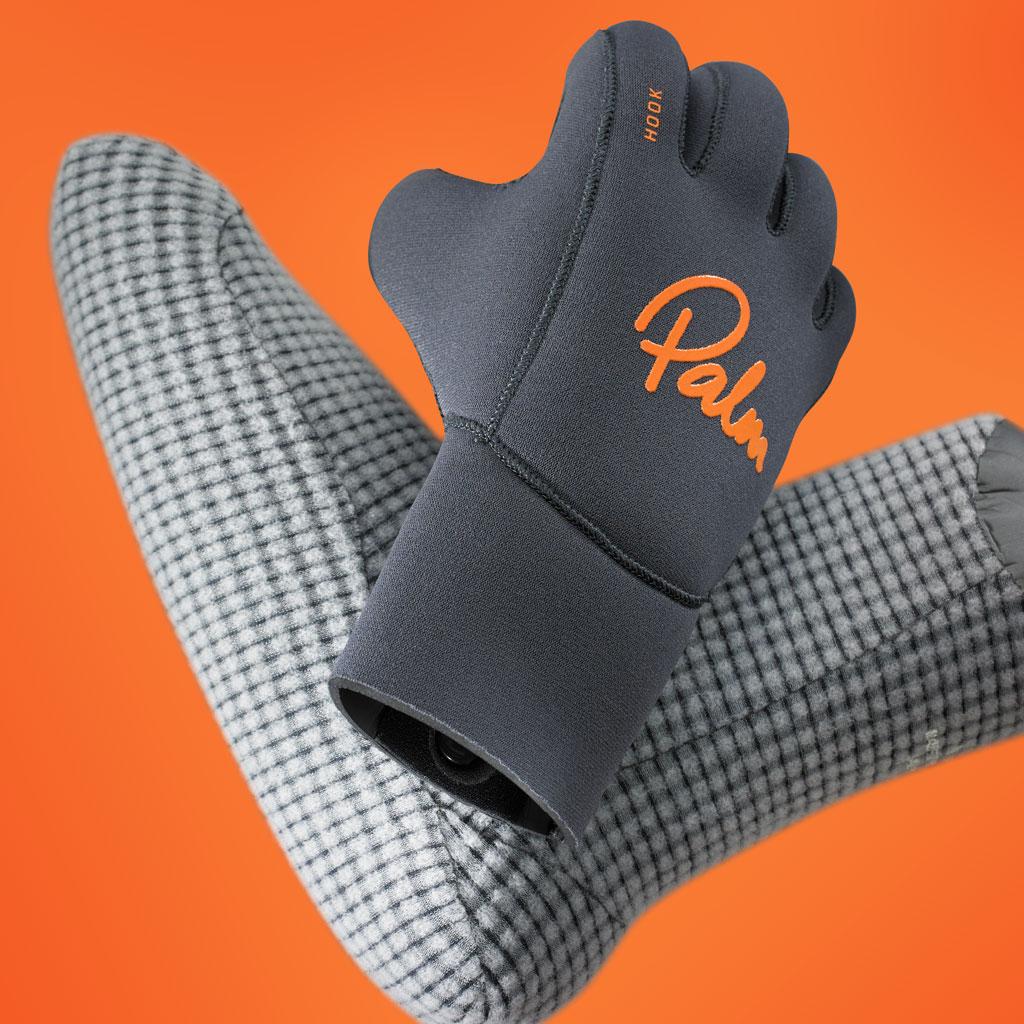
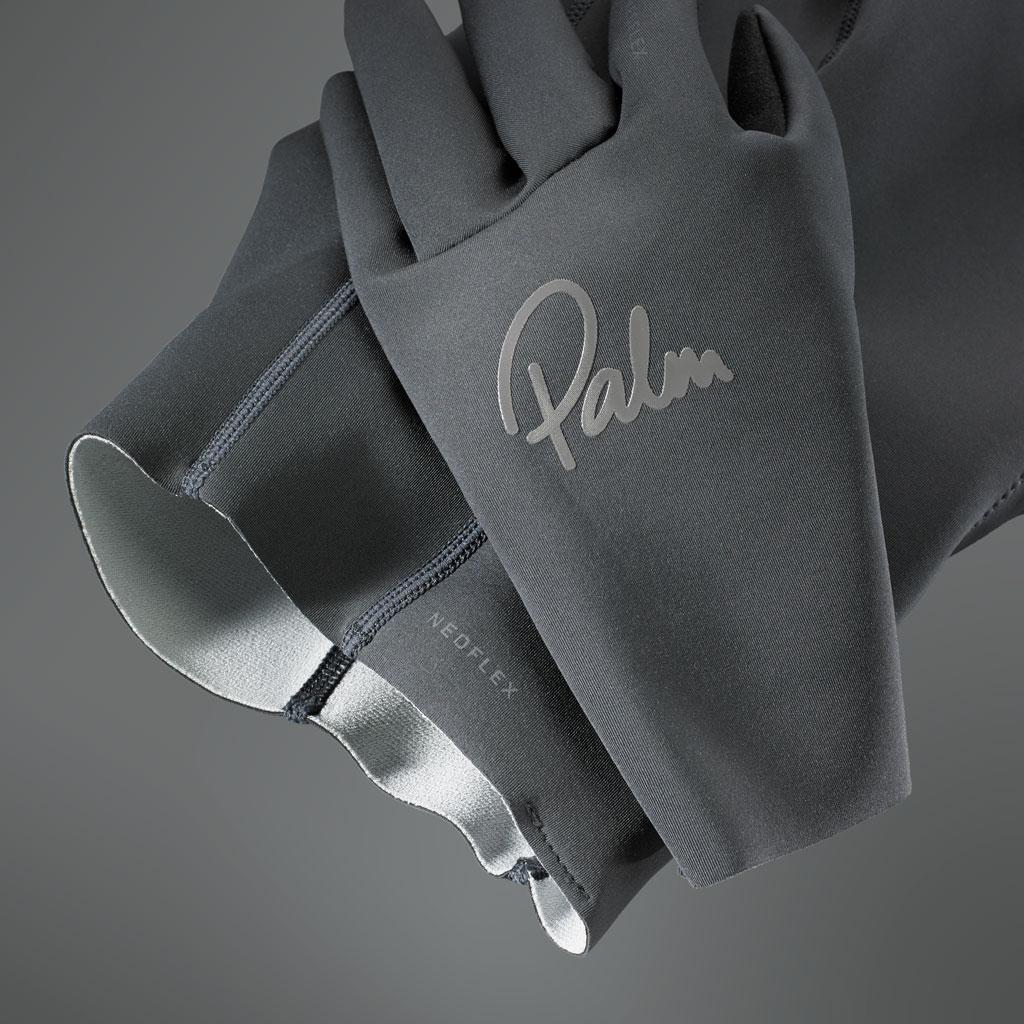
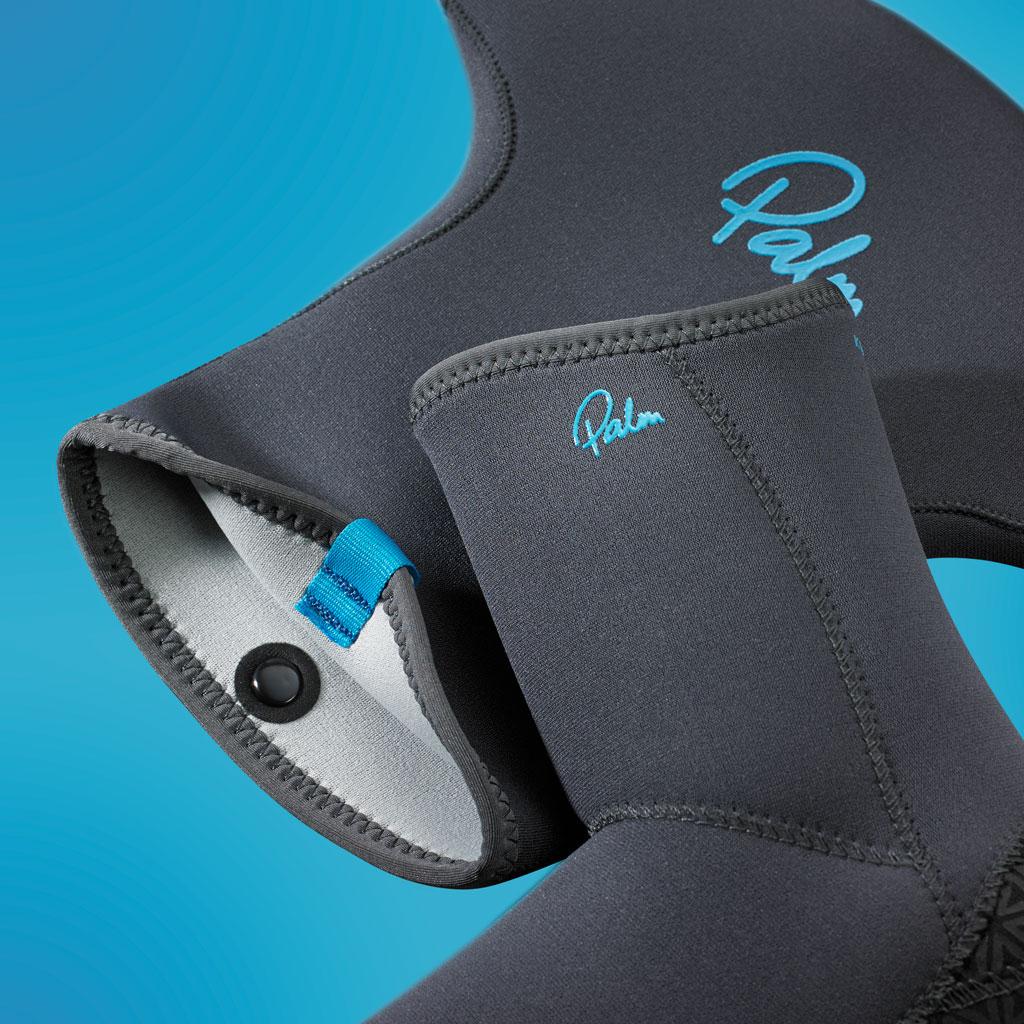
Gloves, mitts or pogies,
which is right for me?
Gloves
Watersport gloves fit closely, like an extra layer to your skin, allowing free movement by keeping fingers and thumbs separated. Usually fully covering the wrist, they are tight to put on, so sizing is important. Typically made from insulating neoprene; thicker gloves will keep you warmer but will reduce your dexterity and feel for your paddle, so there is a choice to be made of which style is for you.
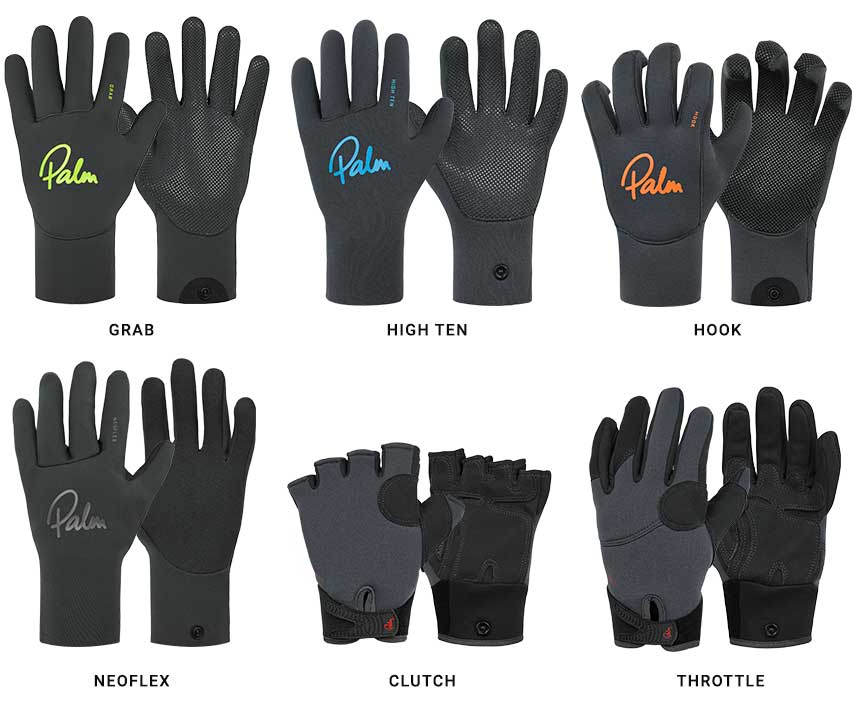
Amara faux leather gloves like the Clutch, Throttle and NeoFlex gloves, are great all-year round, protecting from chafing and the effects of wind and sun on your skin. For extra warmth and dexterity 1.5 mm neoprene gloves like the Grab cover your hands from wrists to fingertips and has watertight seams. If it’s really cold, heavy duty gloves like the Hook have 3 mm of neoprene insulation and an extra thermal lining inside, but 2 mm neoprene on the palms and a curved shape for gripping a paddle (making your grip more natural with a thicker glove).
Mittens
Mitts keep all your fingers together, leaving just the thumb free. The exposed surface area of mitts is less than gloves with fingers (reducing wind chill) and your digits can share their warmth – at the expense of not being able to move your fingers entirely independently. Mitts for paddling work well with an open palm, like the Talon mitts, so your hand makes direct contact with your paddle. There is no better grip than skin. Closed palm mitts like the Claw mitts will keep the water out for really cold conditions.
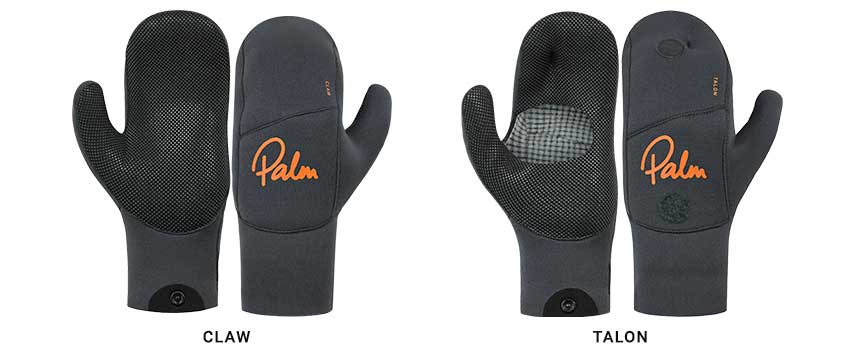
Open Palm mitts are really adaptable to the prevailing conditions too – you can fold the neoprene material back leaving only your thumb fully covered for better dexterity, and then you slip your fingers back into the mitts when the weather turns. But of course, they are not dry so can be colder than closed mitts on icy days.
Pogies
Pogies give you an even better connection to your paddle than open palm mitts. Unlike gloves or mitts they are installed on a paddle beforehand, wrapping around the paddle shaft and creating a cavity into which you slide your hands. This leaves hands free to grip the paddle shaft as you would normally.
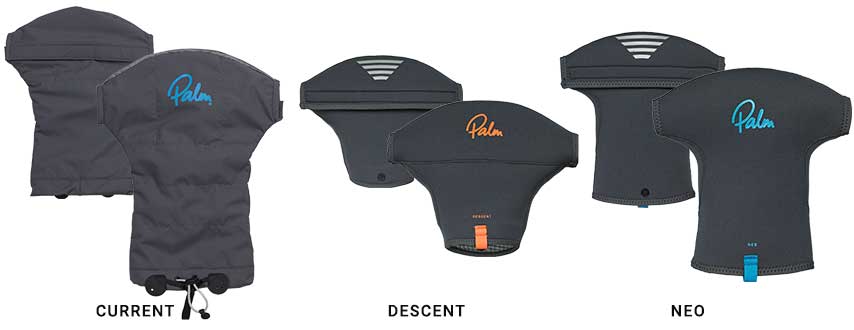
Pogies are probably the warmest and most comfortable solution since they cover your entire jacket wrist and all your digits share the warmth. Hands inside are free to move and flex and the air around quickly warms up. But they stay on the paddle and won’t keep your hands warm while you eat that emergency chocolate bar and they can be a little trickier to get hands in and out of. Choose your preferred length and material from neoprene like the Descent and Neo pogies, or fleece lined water resistant fabric like the Current.
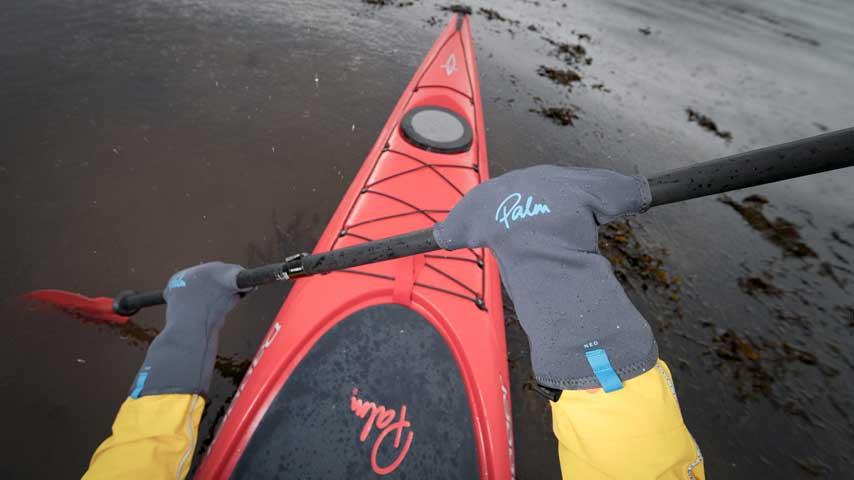
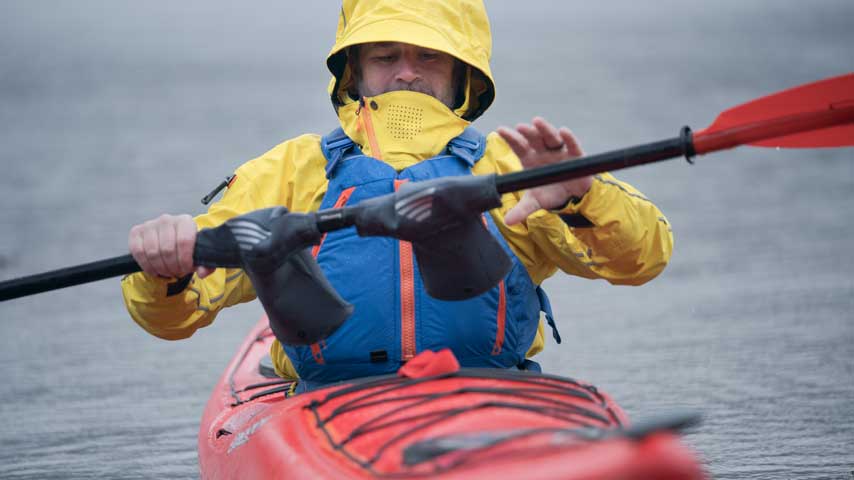
Top tips
Get the right size gloves
Your gloves work best if they are a snug fit – use the size chart on our product pages to get the right size for you. Measure from the tip of your longest finger to the base of your palm at the wrist, this is your hand length measurement. Then wrap the tape measure around your hand at the widest part of the palm and lightly close your hand before taking the measurement – this is your hand circumference.
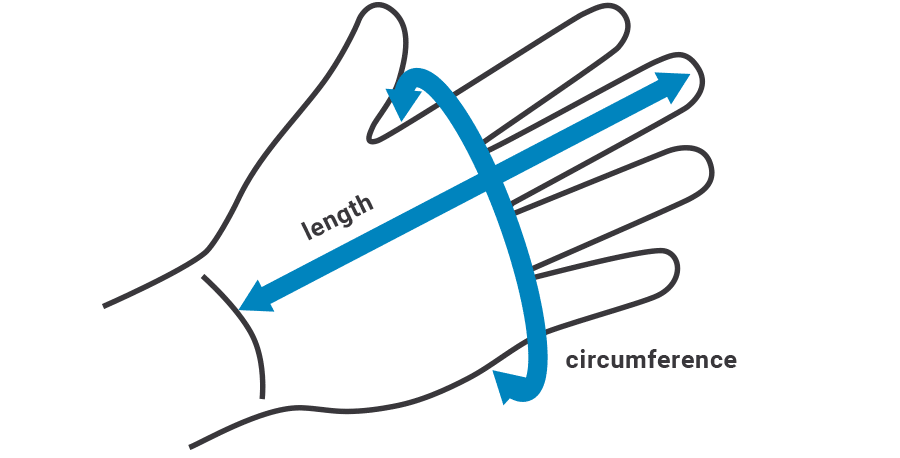
What thickness?
Surfing and diving gloves may be really quite thick, some more than a chunky 5 mm … but for the kind of grip and dexterity we need for paddling typically 3 mm thick neoprene is the maximum, sometimes with thinner sections on the Palm (like the Hook gloves). Our thinnest gloves the 0.5 mm NeoFlex gloves have a much closer feel and grip, but won’t be as warm when it’s really cold or icy. A compromise is something like the Grab made of 1.5 mm neoprene with a titanium silver lining to help reflect radiated heat.
Are neoprene gloves waterproof?
Neoprene is waterproof, but not all gloves are. Check whether the seams are ‘glued and blindstitched’, which means the seams do not puncture the material and are sealed up and watertight – it’s also a really durable construction.
Limestone neoprene?
Limestone is the raw material in all of our neoprene gloves. Compared to oil based neoprene, limestone generates a lot less CO2 in production. The black colour pigment in this material is also made from old car tyres and the fabrics bonded to either side of the neoprene are held in place with water based glues.
Keeping a pair of gloves together is a snap!
Most Palm gloves have a small snap button on the wrist. These can be used to keep pairs together so you don’t lose one in your kit bag.
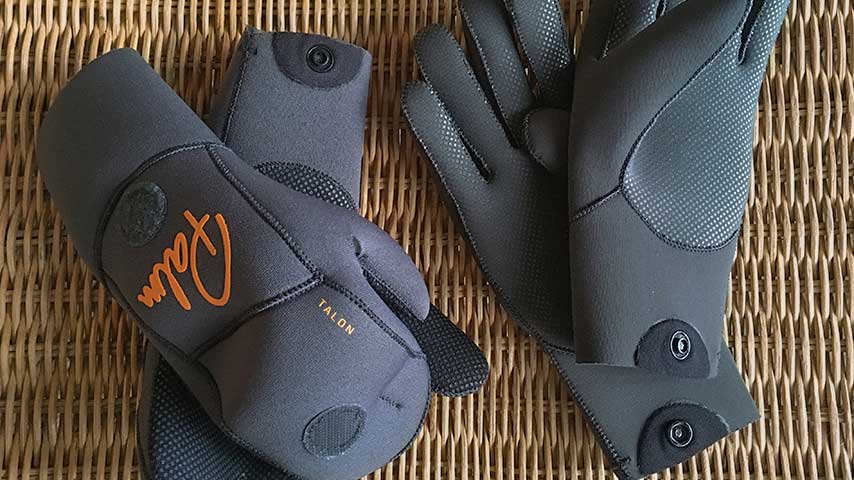
Sun protection
Gloves can insulate against cold, but some work well in the sun to protect your exposed hands from UV. When you’re paddling there is a lot of reflected UV light and it’s hard to keep the backs of your hands covered in sunblock. The Clutch fingerless gloves and Throttle gloves are well suited for this.